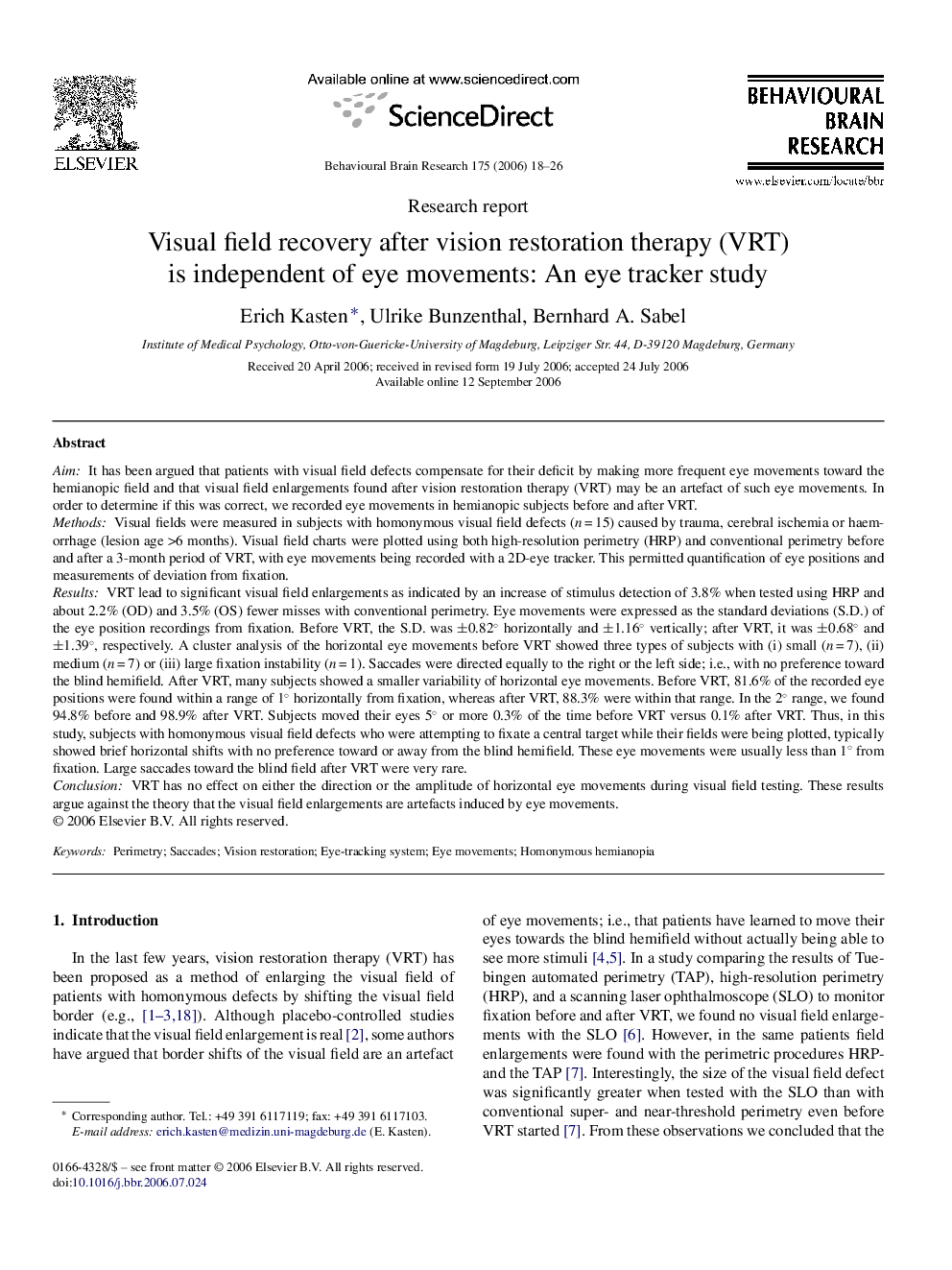| کد مقاله | کد نشریه | سال انتشار | مقاله انگلیسی | نسخه تمام متن |
|---|---|---|---|---|
| 4315925 | 1290100 | 2006 | 9 صفحه PDF | دانلود رایگان |

AimIt has been argued that patients with visual field defects compensate for their deficit by making more frequent eye movements toward the hemianopic field and that visual field enlargements found after vision restoration therapy (VRT) may be an artefact of such eye movements. In order to determine if this was correct, we recorded eye movements in hemianopic subjects before and after VRT.MethodsVisual fields were measured in subjects with homonymous visual field defects (n = 15) caused by trauma, cerebral ischemia or haemorrhage (lesion age >6 months). Visual field charts were plotted using both high-resolution perimetry (HRP) and conventional perimetry before and after a 3-month period of VRT, with eye movements being recorded with a 2D-eye tracker. This permitted quantification of eye positions and measurements of deviation from fixation.ResultsVRT lead to significant visual field enlargements as indicated by an increase of stimulus detection of 3.8% when tested using HRP and about 2.2% (OD) and 3.5% (OS) fewer misses with conventional perimetry. Eye movements were expressed as the standard deviations (S.D.) of the eye position recordings from fixation. Before VRT, the S.D. was ±0.82° horizontally and ±1.16° vertically; after VRT, it was ±0.68° and ±1.39°, respectively. A cluster analysis of the horizontal eye movements before VRT showed three types of subjects with (i) small (n = 7), (ii) medium (n = 7) or (iii) large fixation instability (n = 1). Saccades were directed equally to the right or the left side; i.e., with no preference toward the blind hemifield. After VRT, many subjects showed a smaller variability of horizontal eye movements. Before VRT, 81.6% of the recorded eye positions were found within a range of 1° horizontally from fixation, whereas after VRT, 88.3% were within that range. In the 2° range, we found 94.8% before and 98.9% after VRT. Subjects moved their eyes 5° or more 0.3% of the time before VRT versus 0.1% after VRT. Thus, in this study, subjects with homonymous visual field defects who were attempting to fixate a central target while their fields were being plotted, typically showed brief horizontal shifts with no preference toward or away from the blind hemifield. These eye movements were usually less than 1° from fixation. Large saccades toward the blind field after VRT were very rare.ConclusionVRT has no effect on either the direction or the amplitude of horizontal eye movements during visual field testing. These results argue against the theory that the visual field enlargements are artefacts induced by eye movements.
Journal: Behavioural Brain Research - Volume 175, Issue 1, 25 November 2006, Pages 18–26